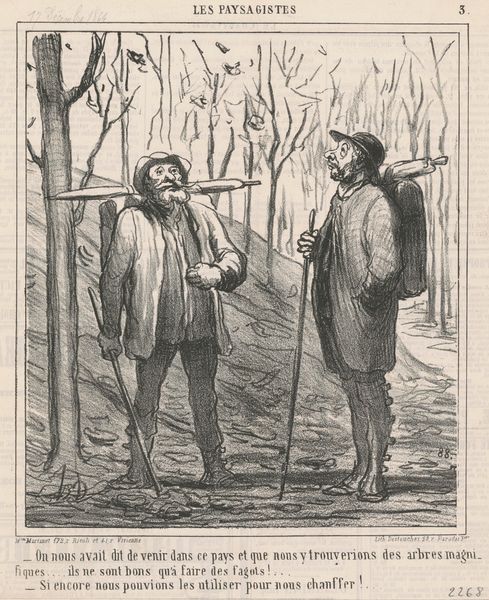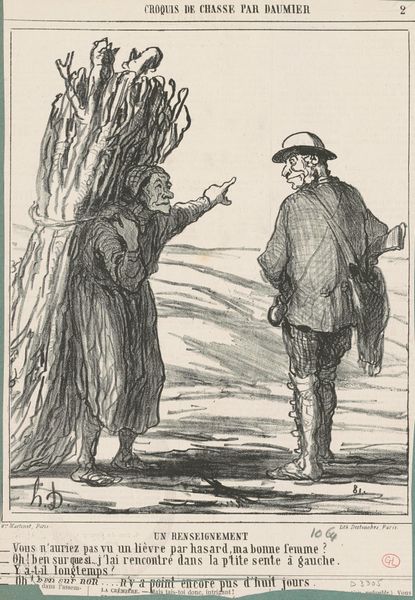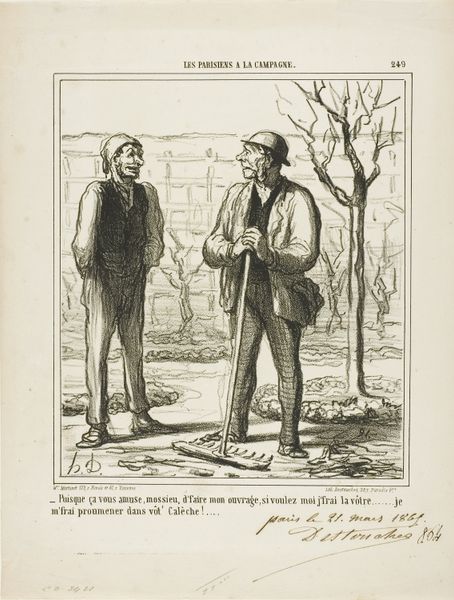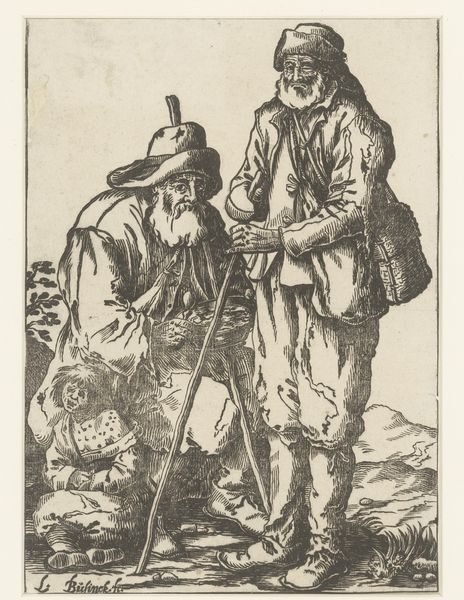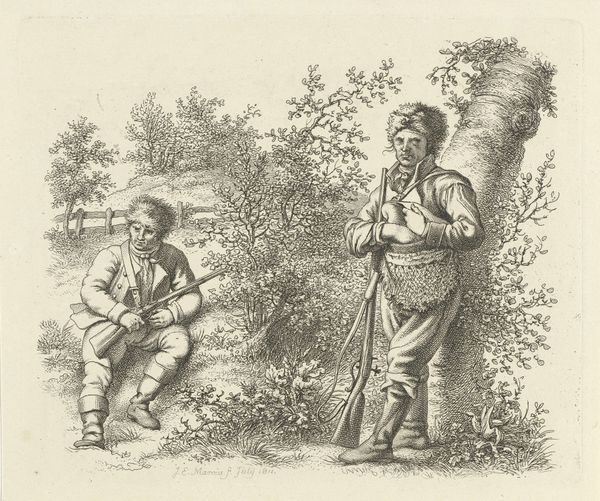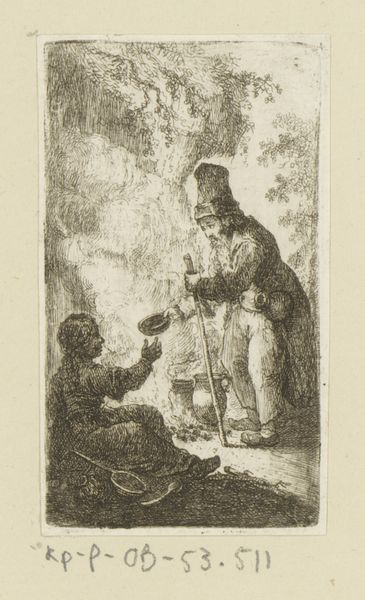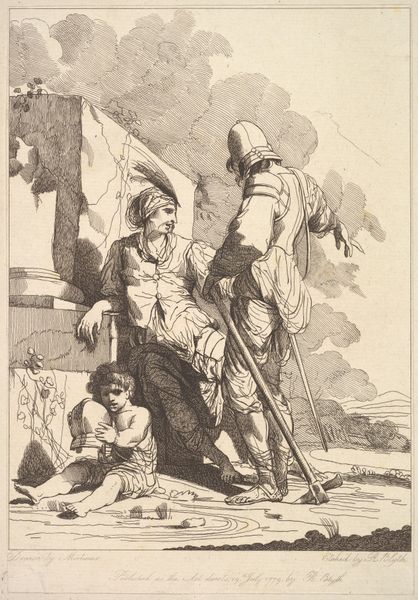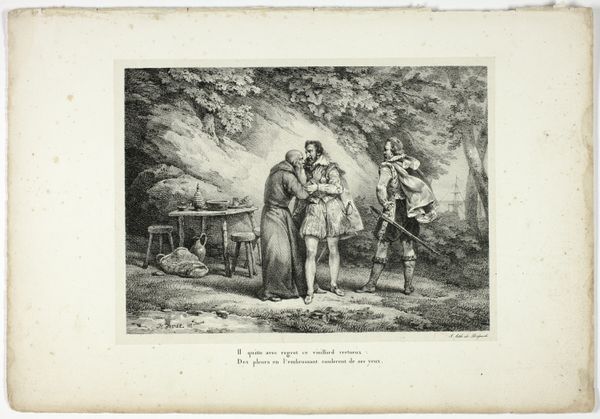
print, woodcut
#
narrative-art
# print
#
figuration
#
romanticism
#
woodcut
#
sketchbook drawing
Dimensions: 90 mm (height) x 81 mm (width) (bladmaal)
Editor: This is "Rübezahl og Bonden" by Andreas Flinch, a woodcut print from the early 1840s. The contrast is really striking and it definitely has an ominous mood. What strikes you most about this piece? Curator: Immediately, the power dynamic between the figures. We see a figure presenting something to another in what appears to be a subservient posture, and it makes me think about the ways folklore often served as a way to encode social commentaries. How might we interpret this scene in the context of 19th-century class structures? Editor: I see what you mean. The figure on the left does seem to be offering a gift or payment. Do you think Flinch was critiquing those power imbalances, or reinforcing them? Curator: That's the crucial question, isn't it? Given the rise of Romanticism, and its focus on the common person and on nationalist narratives, it could be interpreted as a commentary on the inherent tensions of a society in flux, a time when the traditional rural class found itself increasingly interacting with different kinds of powers, new societal systems. Notice how the use of black and white exaggerates features in each figure, but especially on the right. Why? Editor: The contrast definitely draws the eye! So, are you suggesting that this piece might be using folklore to explore anxieties about social and economic change? Curator: Precisely. And perhaps it even subtly questions who truly holds the power in this encounter. Maybe Flinch is telling us to consider what each side gives, what each takes away... what is 'owed.' What do you think about the landscape? Editor: The landscape does seem to hold them, not the other way around. Thank you, I now see how Flinch is using the narrative to tell a richer story! Curator: And by viewing it through that social and historical lens, we gain a much richer understanding of the piece.
Comments
No comments
Be the first to comment and join the conversation on the ultimate creative platform.
